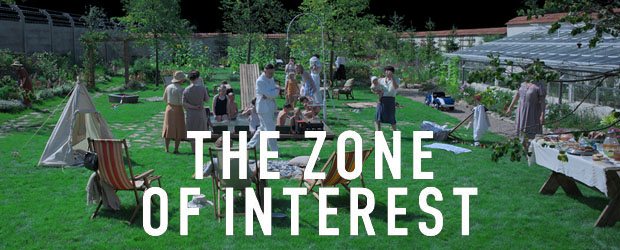Switch to: German
The Zone of Interest is a historical drama by Jonathan Glazer depicting the horror of the Holocaust from a new perspective.
The Zone of Interest is a German-language movie adaptation of the novel of the same name by Martin Amis. Director Jonathan Glazer (most recently: Under the Skin with Scarlett Johansson) takes some liberties and doesn’t strictly follow the original novel. Only one of the three perspectives is shown and the fictional narrator turns into Rudolf Höß (played by Christian Friedel), the commandant of the Auschwitz concentration camp from May 1940 to November 1943, close to the Polish town of Oświęcim. The camp commandant lives in a freshly renovated two-story house with his wife Hedwig (Sandra Hülser) and their five children. There’s only wall between the northeast of the Auschwitz I concentration camp and the house, three kilometers from the Auschwitz II-Birkenau extermination camp.
The movie begins with an ominous musical sequence. For several minutes we listen to Mica Levi’s atmospheric music, but don’t see any images. At the Cannes Film Festival, Glazer explains that the aim is to transport viewers from their busy lives into the narrative of the movie. At the beginning we join the Höß family on a swimming trip in a nearby river. However, the majority of the movie takes place in the residential building within the title-giving area. The Zone of Interest follows the Höß family in all sorts of everyday situations, from dinners to a euphoric garden party with friends and a visit from their grandmother (Imogen Kogge). While the children play happily in the pool, the high guard towers, the fences and the red tiled roofs of the seemingly endless rows of houses in which the prisoners are held are clearly visible. Unlike the book, the movie does not provide any direct insight into the camp.
However, the constantly prevailing soundscape gives an idea of the horrid events taking place behind the wall. The roar of the machines, the rattle of the trains arriving in a gruesome frequency, the screams of the passengers and the soldiers’ shots accompany us throughout the movie. While most of the movie doesn’t feature any kind of music, the scenes which do are disturbing. The Yiddish song Sunbeams, which was written by Joseph Wulf in 1943 in the Auschwitz III Monowitz concentration camp, is played by a Polish pianist after a short speech by the Holocaust survivor, which was recorded in the 1960s, while the never before written down lyrics of the song are shown.
The Zone of Interest was filmed in such a way that we witness the events as a chamber drama. Up to ten different camera perspectives are available per scene. There are no stage directions during filming. Instead, actors can act freely. The dialogues, which are characterized by everyday problems and interspersed with an antisemitic ideology, seem authentic and the performance of the actors, especially Christian Friedel as the stoic camp commandant and loving family man Rudolf Höß and Sandra Hülser as his egocentric wife Hedwig Höß, cannot be praised highly enough. The contemporary and more modern costume and set design contributes to the authentic atmosphere.
Łukasz Żal’s unorthodox cinematography creates many interesting images, such as the depiction of a meeting of the SS command staff from a bird’s eye view, in which the power apparatus appears all the more all-encompassing, or the flat black and white thermal images of a Polish girl who secretly supplies the prisoners with food. However, the panoramic shots do not lead to an emotional disconnect from the atrocities, for example when the family members distribute the camp inmates’ belongings amongst themselves while making light of the situation, the children live out National Socialist ideas through play, or when an architect explains to the commandant in great detail and in atrocious dispassion how a newly developed crematorium operates.
Once the setting has been established, Friedel and Hülser are given more space to play the Höß couple. This culminates in a convincingly acted confrontation. The commander was later transferred to Oranienburg. Here we get an insight into the glitz and glamor in which the officials of the Nazi regime live in Berlin. While we experienced many positive personal moments in the family at the beginning, the tide turns. Scenes from today’s Auschwitz-Birkenau State Museum show how long after the events the culture of remembrance is still maintained.
The Zone of Interest shows the devastating consequences of a National Socialist mindset in a subtle and powerful way. The idyllic family life is constantly overshadowed by the horrid atrocities taking place. On a visual level, the events are brought into the 21st century with modern equipment, accompanied by an all-pervasive carpet of sound. The chamber play is told from innovative perspectives, but due to the many camera and scene changes it also seems somewhat incoherent and can feel lengthy. The Zone of Interest is more important than ever in the current context, can be understood as a warning against the coarsening of society and it’s also a movie worth seeing. The movie is being shown in select theatres in the US since December 15th, 2023 and it’ll be released in the UK on February 2nd, 2024 and in Germany on February 29th, 2024.
The film distribution company provided us with an early screening of The Zone of Interest.






